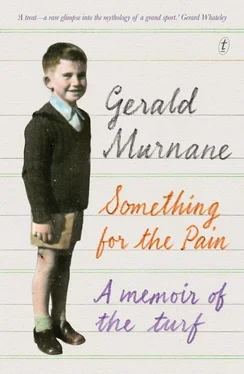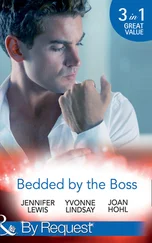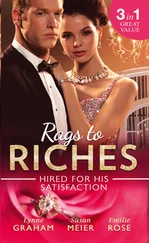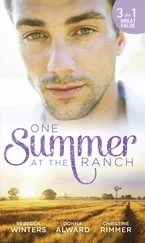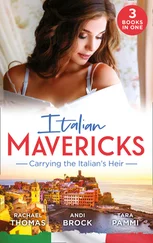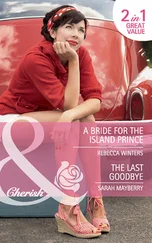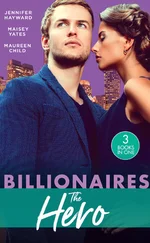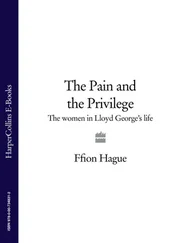I had long ago admired the connections of Sir Flash for their daring raid on Warrnambool. The Robertsons of Pleasant Bank had raided as far away as Melbourne. I saw a black-and-white photograph of a hurdle racer owned by Andy’s grandfather. The photographer had caught the horse in midair, soaring over an old-style batten hurdle. It was the last hurdle of the race, and the Robertson horse had a winning lead at Flemington ten years before my birth and in the great days of the Borderers.
23. Sacred Heart Cathedral, Bendigo
SURELY A DOZEN years at least have passed since I last saw Bendigo. Maybe I’ll never see it again. If I do, though, I’ll be sure to spend some of my time there as I’ve spent some of my time whenever I’ve visited the city since I left it nearly seventy years ago — I’ll call at the Sacred Heart Cathedral in Golden Square; I’ll enter the building from near the main entrance in Wattle Street; and I’ll sit for a few minutes in one of the back pews, not meditating and certainly not praying but just watching whatever images occur to me. And, if no images occur to me at once, or if an overly long interval occurs between the appearance of one or another image and its successor, then I’ll simply look around me at the amazing light inside my favourite building.
I’ve sometimes wondered whether my childhood experiences in Bendigo are largely responsible for my never having wanted to travel. How else to explain why I’ve never been on aeroplane — why I’ve never been further from Melbourne than Murwillumbah, in New South Wales, to the north; Kettering, in Tasmania, to the south; and Streaky Bay, in South Australia, to the west? My wife and I had serious differences in many matters, but she and I were united in our dislike of travel or tourism. Sometimes, after our three sons had left home, and when the month was January and half the people of Melbourne seemed to have found somewhere better to be, Catherine would ask me whether we should go away for a few days. Even if we failed to enjoy our few days away, she would explain, we could at least tell our friends and neighbours that we had been away, instead of having to explain, as we usually had to, why we never took holidays. My answer was always the same: the only place that I had any desire to visit, apart from the racecourse that was the venue for the next Saturday meeting in Melbourne — the only place that tempted me to leave my desk was Bendigo.
Occasionally, we did take a daytrip to Bendigo. Catherine had a friend there, a woman who had been widowed in early middle age. Catherine’s friend sometimes offered to show us around the city, but I would always put her off. All I wanted to do in Bendigo was to sit for twenty minutes in Sacred Heart Cathedral. Once, I consented to stroll with Catherine and her friend under the elms in Rosalind Park, the same trees that I had walked beneath on memorable days of my childhood. Yes, the trees were the same, but the motor traffic in Pall Mall and View Street and Williamson Street kept me from feeling any connection with the mostly quiet city where I had lived from 1944 until 1948.
Even the ordinary sunlight on a fine day in Bendigo could set me daydreaming, but the light inside Sacred Heart Cathedral was something else again. It was a refinement or a distillation of the light outside. On the day when I first arrived in Bendigo in January 1944, I made a fanciful connection between the strange new light all around me and the gold that had been responsible for the founding of the city and its continuing prosperity. I supposed that the special quality in the light above Bendigo was somehow the result of the sunlight’s having been reflected from the countless specks of yellow in the quartz pebbles strewn on the footpaths of all the back streets of the city.
In earlier years, I could not have found words to account for the influence on me of the light in the cathedral; I was only able to feel a sort of pleasant suspense, as though about to experience something that was more than daydream but not so unalterable as actuality. In more recent years, my way of responding to the light has been to hear in mind, or to see in mind, as though on the page where I was startled to read them for the first time when I was nearly forty, the words attributed to Paul Éluard: There is another world, but it is in this one . And then, because no abstraction, no matter how seemingly profound, can satisfy me for long, my mind is occupied by imagery. I sometimes wonder what sort of imagery was in Paul Éluard’s mind whenever he pondered on his profound statement. It was probably very different from the stuff that fills my mind on such occasion. I’ve never read that Paul Éluard was the least bit interested in horse racing.
One Sunday morning in September 1948, I was kneeling at intervals and at other times standing or sitting while solemn high mass was being celebrated in Sacred Heart Cathedral, Bendigo. My father was beside me. My mother and my two younger brothers were at home. Perhaps they were attending one of the masses at St Kilian’s, which was our usual church. I don’t remember. Two things should have puzzled me that morning, but I seem not to have given them much thought. First, I should have wondered why my father and I had walked two kilometres from our house in Neale Street to the cathedral when St Kilian’s was only half that distance away. The other matter was that my father had often declared that he disliked the tedious ceremony of a high mass. My father was a faithful Catholic but hardly a devout one. The nearest he ever came to advancing a theological argument was his occasionally arguing that God was surely more pleased to be honoured by the simpler ceremony of the so-called low mass than by the music and incense and the bowings and scrapings of a high mass. He also lacked the docility and the obsequiousness that so many Catholics of that era accorded the clergy. He approved of priests who visited the sick and the poor but had little admiration for those who hobnobbed with the doctors and lawyers of their parishes.
And yet, there we were, he and I, on that fine spring morning, sitting through a high mass that was interrupted often by the organ and the choir and by the to-ings and fro-ings of the several sumptuously robed co-celebrants, one of whom might have been the bishop himself — probably not frail old McCarthy but his truculent coadjutor Stewart. (I should never speak harshly of Stewart. He was derided in later years as an archconservative but it was he who oversaw the work that made the cathedral complete. When I lived in Bendigo, and for many years afterwards, the building still awaited its spire.) I was sometimes devout as a child but more often lax, although never tempted to rebel or to disbelieve. During my devout periods, I would try to pray during mass; during my lax periods, I would daydream. I was daydreaming for much of the morning while my father and I were in the cathedral.
My daydream took the form of a narrative. I had read few books at the time. The sort of narrative most familiar to me was the radio drama. On many a night, after having asked my mother’s or my father’s permission, I was allowed to listen to a fifteen-minute or thirty-minute program on 3BO in which the voice of a narrator and two or three other voices enacted a dramatisation of what had probably started as a chapter in a book of popular history or an item in an encyclopaedia. I can recall hearing a dramatised account of the mystery of the Mary Celeste and another of the discovery of anaesthetics. Medical history seems to have been a fertile source of such dramas. I recalled just now my hearing an account of William Harvey’s cutting up of the family parrot in his search for proof that blood circulated rather than lay around as one of the four humours. Anyway, while the bishop sat in his canopied chair beside the altar, or while the other two priests were wielding the thurible or the aspergillum, I was composing a radio drama having as its subject my father, Reginald Thomas Murnane, of whom I was rather fond and whose many flaws and faults had not yet become apparent to me.
Читать дальше
